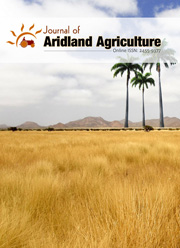Effects of hexavalent chromium on growth , phytotoxicity , tolerance index of Cosmos bipinnatus, Cav. and Celosia cristata, L. - Phytoremediation
DOI:
https://doi.org/10.19071/jaa.2016.v2.298487Abstract
Genetically modified (GM) foods are derived from organisms whose genetic material (DNA) has been modified in a way that does not occur naturally. The introduction of a gene from a different organism or the term genetically modified plants and foods are most commonly used to refer to crop plants created for human and animal consumption using the latest molecular biology techniques. But not all genetically modified plants are grown as crops. There are many genetically modified ornamental plants are used for flowering purpose. The latest molecular technology alters the plant quality and used for many purposes. This present study is to investigate phytoremediation based on genetically modified ornamental plants Cosmos bipinnatus, Cav. and Celosia cristata,L. belongs to Astraceae and Amaranthaceae family.  The main aim of the study is remedy for heavy metal pollution and relation to human health, ecosystem and economical disasters of wealthy and poor farmers.
Downloads
References
Chowdhury E.H., Mikami O., Murata H., Sultana P., Shimada N. Yoshioka M., Guruge K.S., Yamamoto S., Miyazaki S Yamanaka N. and Nakajima Y. (2004). Fate of maize Intrinsic and recombinant genes in calves fed genetically modified maize Bt11. J Food Prot.67:365–370.
D.J. Walker, R.Clement, A.Roig, M.P.Bernal, The effects of soil amendements on heavy metal bio availability in two contaminated Mediterranean soils, Environ. Pollut-2003.
G.J. Wagner, Biochemical studies of heavy metal transport in plants, in: D.Randall , I.Raskin, A. Baker, D.Blers, R.Smith(Eds), current topics in plant Biochemistry, Physiology, and molecular biology, University of Missovri-1995.
N.Van Larebeke, G.Engler, M.Holsters, S. Van den Elsacker, I.Zaenen, R.A. Schilperoot, J.Schell, Large plasmid in Agrobacterium tumefaciens essencial for crown gall inducing ability nature-2000.
Petruzzelli, G., Pezzarossa, B., 2003. Sorption and availability dynamics of heavy metals in compost amended systems. In: Amlinger, F., Nortcliff, S., Weinfurtner, K., Dreher, P. (Eds.), 2003c. Applying Compost e Benefits and Needs, Proc. of a Seminar 22e23 November 2001. BMLFUW, European Commission, Vienna and Brussels. http://ec.europa.eu/environment/waste/
compost/seminar.htm.
Phipps R.H., Deaville E.R. and Maddison B.C., 2003. Detection oftransgenic and endogenous plant DNA in rumen fluid, duodenal digesta,milk, blood, and feces of lactating dairy cows. J Dairy Sci.
Sharma, S.S., Dietz, K.J., 2009. The relationship between metal toxicity and cellular
redox imbalance. Trends Plant Sci. 14, 43–50.
Van Assche, F., Clijsters, H., 1983. Multiple effects of heavy metals on photosynthesis. In:Marcelle, R., Clijsters, H., Van Poucke, M. (Eds.), Effects of Stress on Photosynthesis. Martinus Nijhoff/Dr W. Junk Publishers, London, pp. 371–382.
Wong, M.K., Chuah, G.K., Koh, L.L., Ang, K.P., Hew, C.S., 1984. The uptake of cadmium by Brassica chinensis and its effect on plant zinc and iron distribution. Environ. Exp. Bot. 24, 189–195.
Zhang, H., Zhao, F.J., Sun, B., Davison, W., McGrath, S., 2001. A new method to measure effective solution concentration predicts copper availability to plants. Environ. Sci. Technol. 35, 2602e2607.





 .
.